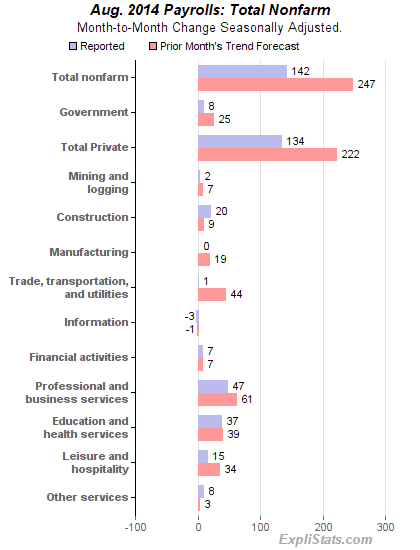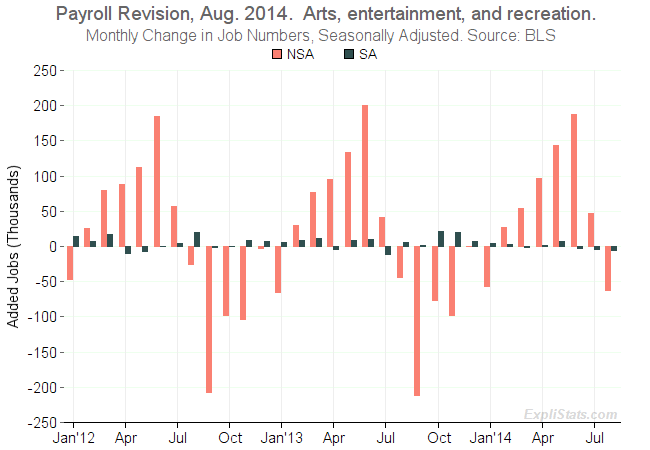Click to enlarge
Today’s Payroll Report (+142,000 jobs in August) came in far below consensus (+230,000) and our own trend extrapolation (+247,000).
See our Charts and Table page for numbers and details.
However, much of the shortfall occurred in industry sectors which are very sensitive to seasonal variations: If an industry’s usual downsizing between August and September happens a week earlier, this can result in an unusual seasonally adjusted shift.
Two very-large sectors fell prey to this:
- Food Services lost a reported 17,000 jobs in August, Seasonally Adjusted, against our trend estimate of a 5,900 gain.
- Transportation Equipment Manufacturing lost a reported 9,200 jobs, seasonally adjusted, against our trend estimate of a 12,200 gain.
Now, the former always sees a large decline from August to September, in the real, not-seasonally-adjusted jobs level, and a bringing forward by a week, of seasonal layoffs can give rise to a sharp drop in the seasonally adjusted figure.
The latter seems to have suffered from this in July/August, and the August reported drop is simply a catch up on this.
More charts in explanation – we hope – in a later post, but for now here is a more striking example of the seasonal “cliff” demonstrated in a smaller industry. Note how the August 2014 drop in the Not Seasonally Adjusted (NSA) jobs level was greater than in 2012 and 2013, and how it gave rise to a Seasnally Adusted (SA) fall in August 2014.
But the question is, does this large drop presage an real year to year drop, or was the drop perhaps just a week earlier this year?

Click to enlarge
Unemployment Rate
The headline rate was reported today at 6.1% for the month of August, down from 6.2% in July, to the same level as in June. (Note that the numbers are rounded to one decimal place.)
Again, we think that seasonally adjustment problems are driving this because when we look at a breakout of the various employment ratios by age group we see that the last two months’ changes in unemployment being driven largely by changes in the labor force participation rate of 16-24 year-olds. Which is, of course, very sensitive to the annual dates of summer vacation from high school and college.
